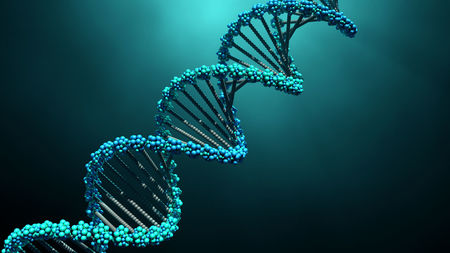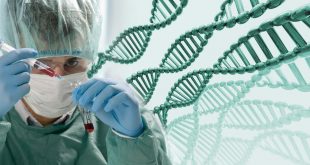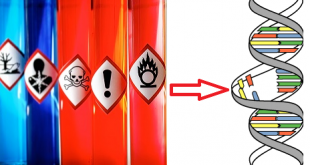Each eukaryotic nucleus encloses a fixed number of chromosomes which contain the nuclear DNA. During most of a cell’s life, its chromosomes exist in a highly extended linear form. Prior to cell division, however, they condense into much more compact bodies which can be examined microscopically after staining. The duplication of chromosomes occurs chiefly when they are in the extended stage (interphase).
One part of the chromosome, however, always duplicates during the contracted metaphase state. This is the centromere, a body that controls the movement of the chromosome during mitosis.
Telomere
The ends of eukaryotic chromosomes are also the ends of linear duplex DNA and are known as telomeres. In most eukaryotes the telomere consists of a short repeat of TTAGGG many hundreds of units long but in Saccharomyces cerevisiae the repeat unit is TG1–3.
Best safe and secure cloud storage with password protection
Get Envato Elements, Prime Video, Hotstar and Netflix For Free
Best Money Earning Website 100$ Day
#1 Top ranking article submission website
- The enzyme telomerase is responsible for maintaining the integrity of telomeres.
Origins of Replication
All of the cell’s DNA must be replicated once, and once only, during the cell cycle. So far, origins of DNA replication have not been unambiguously identified in other eukaryotes.
Repeated Sequences
It will be recalled from the section on reassociation kinetics of DNA that repeated sequences are a common feature of eukaryotic DNA. How are these repeated sequences organized in the genome? Are they tandemly repeated or are they dispersed? The answer is that both organizational patterns are found. In general, highly repetitive DNA is organized around centromeres and telomeres in the form of tandem repeats, whereas moderately repetitive DNA is dispersed throughout the chromosome.
DNA Transposons
DNA transposon sequences constitute roughly 2.5% of the human genome and are members of the MER1 or MER2 families of medium reiterated frequency repeat family. Tc1 from Caenorhabditis elegans and mariner from Drosophila mauritania are members of the Tc1/mariner superfamily of DNA transposons (Plasterk et al. 1999). These transposons have a single ORF encoding the transposase.
Distribution of Transposable Elements
The distribution of transposable elements in the human genome is quite different to that in the fruit fly, nematode and Arabidopsis genomes.
- First, the euchromatic portion of the human genome has a much higher density of transposable element copies.
- Second, the human genome is filled with copies of ancient transposons whereas the transposons in other organisms, particularly the fruit fly, are of more recent origin.
- Thirdly, two repeat families (LINE1 and Alu) account for 60% of all interspersed repeat sequences in the human genome but the other genomes studied contain many different transposon families. Similarly DNA transposons represent only 6% of all interspersed repeats in humans but 25, 49 and 87% in the fruit fly, Arabidopsis and the nematode, respectively.
Segmental Duplications
Such duplications involve the transfer of 1–200 kb blocks of genomic sequence to one or more locations in the genome. In human DNA, the pericentromeric and subtelomeric regions of chromosomes are filled with segmental duplications but they are much less common in the Saccharomyces, nematode and fruit fly genomes. In Arabidopsis there are 24 segmental duplications that account for 58% of the genome but only one is in the centromeric region.
Segmental duplications can be divided into two categories: interchromosomal and intrachromosomal duplications.
- The former are defined as segments that are duplicated among non-homologous chromosomes. For example, a 9.5 kb genomic segment from the human adrenoleukodystrophy locus from Xq28 has been duplicated to regions near the centromeres of chromosomes 2, 10, 16 and 22.
- Intrachromosomal duplications occur within a particular chromosome or chromosomal arm. This category includes several duplicated segments, also known as low copy repeat sequences, which mediate recurrent chromosomal structural rearrangements associated with genetic disease in humans. For example, on chromosome 17 there are three copies of a 200 kb repeat separated by 5 Mb of sequence and two copies of a 24 kb repeat separated by 1.5 Mb of sequence. These sequences are so similar that they can undergo recombination (for a review of this topic the reader should consult Eichler 2001).
Centromere Structure
During mitosis, the key chromosomal element responsible for directing operations is the centromere and its associated kinetochore complex. The structure of centromeric DNA varies widely in different organisms.
- In S. cerevisiae the centromere is precisely defined and only 125 bp are sufficient to mediate spindle attachment.
- In Drosophila, Arabidopsis, mammals and the filamentous fungus Neurospora, centromere activity has been mapped to highly repetitive regions containing satellite DNA and other repetitive DNA.
- In contrast with S. pombe, the centromere of human chromosomes has a size of 3 Mb (Schueler et al. 2001).
References
- Principles of Genome Analysis & Genomics (Third Edition) by Primrose & Twyman.
Revised By
- Abulais Shomrat on 15th June, 2021.
 Plantlet The Blogging Platform of Department of Botany, University of Dhaka
Plantlet The Blogging Platform of Department of Botany, University of Dhaka




